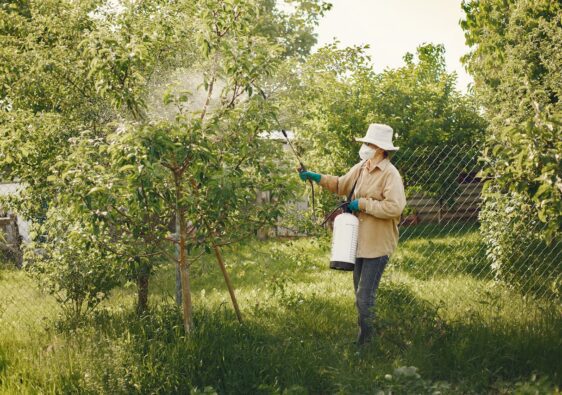Mold is a natural element that can grow almost anywhere. As it feeds off moisture and dead organic matter, it grows in even the most obscure places. Mold spores can travel fast in the air! You’d also be surprised how quickly it can appear on almost any surface.
With this in mind, the presence of basement mold is something you shouldn’t take lightly. From the different species of mold existing, you must realize how dangerous this presence can be!
Here, we’ve made a list of 7 signs of mold in your basement which means you need to act fast. Read on to find out more about molds!
1. Unusual Musty Smells
One of the most evident clues you may notice is an unusual musty smell. This smell often indicates mold, as mold typically grows in damp and humid places.
If you think mold is present, contact a local specialist to assess the area and suggest a course of action. While it’s possible to remove certain types of mold on your own, it’s wise to consult a professional to ensure the problem is taken care of with great detail. To treat mold, you can check this site for questions to ask the basement waterproofing company.
2. Discoloration Along the Walls and Ceilings
Discoloration along the walls and ceilings is another sign of basement mold. If you notice dark patches of green, black, blue, and white along your walls, it’s a sure sign of mold and mildew. A musty smell could accompany these discolored spots if you live in a humid environment.
The dampness of the basement is what lets mold and mildew set in, and the temperature plays a big role in making a breeding ground for them. Keep in mind mold thrives in wet, dark places, and it can be spotted in areas that don’t receive much sunlight. If you come across this sign, it’s best to take care of them as soon as possible by cleaning and dehumidifying the area.
3. Peeling Wallpaper or Paint
One of the telltale signs of basement mold is peeling wallpaper or paint. Humidity, moisture, and water can accumulate mold in a basement if it is humid and damp. Peeling wallpaper and paint can signify that the area is too moist and humid, and thus the presence of mold is highly likely.
It is best to check for mold regularly and to ensure the environment is kept dry and clean. Additionally, any wet areas should be dried as soon as possible before mold can accumulate and form. The better the environment is maintained and dry, the less likely mold will form.
4. Test Different Areas in the Basement
Mold can be a real problem in basements. If left unchecked, it can cause significant damage to the home’s structure and result in costly repairs.
If you notice any of these signs, it’s important to test different areas in the basement. Investing in a mold test kit is the best way to get started.
You can then test different locations around the basement to determine where the problem spots are and decide the best course of action. If a mold issue is found, it is important to take the necessary steps to get rid of mold, protect your family’s health, and keep the basement in the best condition possible.
5. Humid Basement Walls
If your basement suffers from frequent moisture exposure, you should be on the lookout for telltale signs of mold growth on the walls and floor. To combat mold growth and maintain the structural integrity of your basement walls, you should use dehumidifiers to reduce humidity levels and keep the air circulating.
It’s important to maintain proper ventilation and reduce the sources of dampness and moisture, such as leaky windows, condensation, and persistent humidity. Regularly wiping walls, floors, and other surfaces with a detergent-water solution can also help prevent mold growth.
6. Windows and Pipes Condensation
Windows and pipes can be vulnerable areas for mold growth, especially if condensation is present on either. If you notice that your windows or pipes have condensation accumulating, inspect further for other mold problems. You can also check the surrounding area for bubbling walls or floors, discoloration, or warping.
It is important to inspect any areas where moisture is found and take action to prevent mold growth. If any of these warning signs are present, it is always best to call a certified mold inspection specialist to determine the extent of the damage.
7. Allergies and Health Problems Occur
Mold in an environment can often cause many health-related issues, especially in damp and poorly-ventilated areas such as basements. Mold is usually caused by problems with water, such as flooding or high condensation levels forming on surfaces.
Allergies and health problems occur due to mold spores, toxins, and other byproducts. Health problems associated with mold exposure include allergies, eye irritation, skin irritation, respiratory issues, and even more serious problems such as immune system suppression and neurological damage.
Identifying any potential mold growth is important to address the issue swiftly. If symptoms or mold problems appear in your basement, you should contact a professional mold remediation team to assess the problem.
Check the Signs of Mold in Your Basement
Mold is a serious issue for any home. If you spot any of these telltale signs of mold in your basement, it is important to act quickly. Call a professional mold removal specialist to come and inspect your basement immediately.
Proper action can help prevent further damage and create a safe, healthy home for your family.
Are there any additional things you want to look for? Have a look at the other articles on our site.



